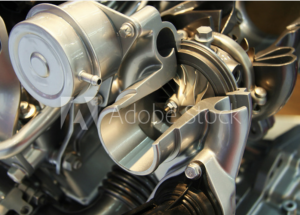Turbo pumps produce pressurized liquid that feeds the combustion chambers. Different kinds of pumps exist including axial and centrifugal pumps. However, these turbo pumps have the same components, i.e., a rotodynamic pump and a driving gas turbine. In-depth knowledge of how this pump works will help you choose the right one. For example, did you know that using an inlet screen reduces possible damage to the turbo pump? At the same time, this screen reduces the pumps efficiency by 10%. Here are 4 tips to using a turbo pump.
1. Allow the Pump to Start and Then Run to Full Speed
Turbo pumps have grease-lubricated bearings. This grease separates unevenly when the pump is not in use for a long time. Catastrophic or severe damage occurs to the pump because of this separation if you do not take precautionary measures. These  measures include allowing the pump to start and then run to full speed. Doing so redistributes the grease among its bearing so that this distribution is even and therefore, unproblematic. Another step you can take is having a qualified technician re-channel the turbo pump. Moreover, storing the pump in a room where the temperature is between -200C and 700C is an excellent precautionary measure as well.
measures include allowing the pump to start and then run to full speed. Doing so redistributes the grease among its bearing so that this distribution is even and therefore, unproblematic. Another step you can take is having a qualified technician re-channel the turbo pump. Moreover, storing the pump in a room where the temperature is between -200C and 700C is an excellent precautionary measure as well.
2. Ensure That the Pump Stays Within Thermal Limits
The production of pressure leads to a corresponding generation of heat. Several factors influence how much heat the pump generates. They include the fluid load, the type of fluid, the fore line pressure, and the ambient temperature (temperature of the room). Cooling a turbo pump is critical because the excess generation of heat leads to a shutdown of the entire system. It can lead to catastrophic breakdowns as well. Fortunately, these pumps have an air cooling kit. Make sure that the kit is working properly but do not rely on it completely. Instead, monitor the pump to ensure that it stays within acceptable thermal limits.
3. Use Electronic Braking In Specific Instances Only
In certain cases, normal venting results in a quick increase in pressure inside the turbo pump. This increase might be so quick and excessive that it may affect the rotor adversely. More specifically, the rotor might decelerate beyond the maximum recommended rate. In this case, an alternative to venting is necessary. Electronic braking is one of these alternatives. It will slow down the rotor, but it will not do it beyond the maximum recommended rate. Turbo pump manufacturers advise their customers to use this alternative only when it is not necessary to do so. In other words, do not develop a habit of using it when venting your turbo pump system is possible.
4. Fit a Bearing Purge System to the Turbo Pump
Sometimes, the fluid that the turbo pump is pressurizing is corrosive at times. Damage to the bearings of the pump is likely to occur if this fluid has corrosive properties. Therefore, mitigation measures to guard against this damage are necessary. One of them is fitting a bearing purge system to the Turbo pump. This system delivers low pressure and low flow fluids to the bearings of the turbo pump. It does that directly ensuring that particles do not enter the bearings. More importantly, the degradation of the bearing lubricant by corrosive fluids is unlikely because of this direct delivery to the pump’s bearings. Moreover, this system removes heat from the bearings’ location helping the pump to stay within the recommended thermal limits.






































